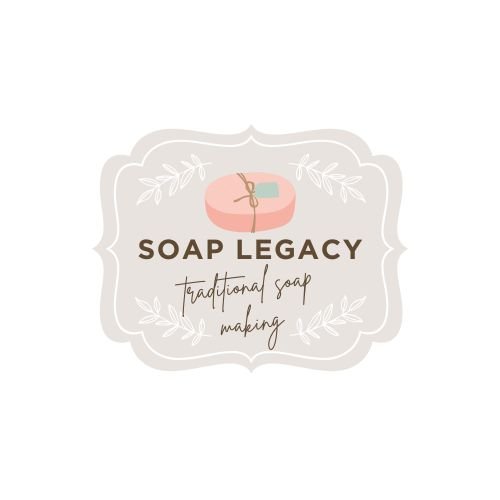The most vibrant flower petals for your homemade soap include calendula for stunning golden hues, dried rose petals for romantic pink tones, and cornflower for reliable blue shades. You'll love lavender buds for lasting purple beauty, while chamomile offers gentle yellow infusions. Safflower petals create bold orange-red tints, and hibiscus delivers deep magenta magic. Each petal brings unique properties and visual appeal to your soap creations, with countless possibilities waiting to be explored.
Calendula: The Golden Standard for Soap Making

Nature's golden gift, calendula stands as the premier choice for soap makers seeking both beauty and functionality in their creations.
You'll find that calendula petals retain their vibrant color even in high pH environments, making them an exceptional natural colorant for your soaps.
Whether you're using dried petals directly in your soap making or creating an infused oil, you'll benefit from calendula's impressive skin-soothing properties.
These therapeutic benefits include helping heal cuts, acne, and inflammation, making your homemade soaps both beautiful and beneficial.
If you're interested in creating unique homegrown products, you'll be pleased to know that calendula is easy to cultivate.
You can incorporate the petals into your soap batter or sprinkle them on top for decoration, knowing they'll maintain their stunning golden hue throughout the curing process.
Dried Rose Petals: Creating Romantic Pink Hues

While calendula holds the crown for durability, dried rose petals bring an unmatched romantic charm to homemade soaps.
Though hardy calendula reigns supreme, the timeless allure of dried rose petals adds ethereal beauty to any handcrafted soap.
You'll love how these delicate petals create a soft pink hue that transforms your soap into a visually appealing masterpiece.
When you're working with dried rose petals in your soap recipes, keep in mind that they can turn brown due to moisture absorption.
To maintain their vibrancy, you'll want to use them within six months of drying.
You've got two options for incorporating these beautiful botanicals: mix them directly into your soap batter or add them as a decorative element after curing.
Either way, you'll enhance both the color and fragrance of your creation, making it a feast for the senses.
Cornflower Petals: Achieving Natural Blue Tones

For soap makers seeking natural blue hues, cornflower petals offer a stunning and reliable solution. Also known as bachelor's buttons, these flower petals maintain their vibrant color throughout the saponification process, making them perfect for homemade soaps.
You'll find cornflower petals are versatile in soap making, as you can mix them directly into your soap batter or sprinkle them on top for decorative purposes. To achieve the ideal visual appeal, use 1-2 teaspoons of petals per pound of soap. This amount creates a beautiful rustic look without overwhelming your creation.
Beyond their aesthetic value, these petals boast skin-soothing properties that enhance your soap's benefits.
If you're looking to create naturally colored, visually striking bars with therapeutic qualities, cornflower petals are an excellent choice for your next soap-making project.
Lavender Buds: Purple Beauty That Lasts

To guarantee your lavender buds maintain their striking purple color in soap, you'll need to dry them completely before incorporating them into your recipe.
You can expect these properly dried buds to keep their vibrant hue for several months, especially when you use the recommended 1/2 to 1 teaspoon per pound of soap.
For the best aromatic results, pair your lavender buds with pure lavender essential oil, which will enhance the natural fragrance and therapeutic properties of your handcrafted soap.
Proper Drying Before Use
Before diving into soap-making with lavender buds, proper drying is crucial to maintain their stunning purple hue and aromatic properties.
You'll want to harvest your lavender buds in the morning after the dew has evaporated, then place them in a well-ventilated area away from direct sunlight.
For best results, consider using a food dehydrator to control the temperature and prevent the buds from becoming too brittle.
Once they're thoroughly dried, store them in an airtight container away from light.
This careful preservation guarantees your lavender buds will maintain their vibrant color and fragrance for up to six months, making them perfect for cold-process soap.
When properly dried, these delicate buds add both aesthetic appeal and a calming aroma to your handcrafted soaps.
Color Retention in Soap
Now that your lavender buds are properly dried, you'll be thrilled to know they can maintain their stunning purple color throughout the soap-making process. This remarkable color retention makes lavender buds a favorite among natural soapmakers who want to create visually appealing products without artificial additives.
You can maximize the purple beauty of dried lavender in your homemade soap in two effective ways.
First, add the buds directly to your soap batter during the saponification process, where they'll maintain their vibrant hue.
Second, use them as a decorative element on top of your cured soap bars for an elegant finish.
For an even more impressive result, try infusing your oils with lavender buds before making soap – this technique enhances both the color and creates a more aromatic soap.
Essential Oil Pairing Tips
While lavender buds create stunning visual appeal in your soap, pairing them with the right essential oils can elevate your creation from beautiful to extraordinary.
Your lavender-infused vibrant soap recipes will benefit from carefully selected fragrance profiles that enhance their therapeutic benefits.
When crafting your soap batter during the saponification process, consider these proven combinations:
- Blend lavender buds with bergamot for an uplifting, citrusy twist
- Pair with chamomile to amplify the calming properties
- Mix with cedarwood for a grounding, earthy foundation
You'll want to add your essential oils at light trace, just before incorporating the lavender buds. This timing guarantees both peak scent retention and visual appeal.
While rose petals might seem like a natural companion, they'll brown over time – making lavender buds your best choice for lasting purple beauty.
Chamomile Blossoms: Gentle Yellow Infusions

Delicate chamomile blossoms offer soapmakers a perfect way to add subtle yellow tones to their handcrafted creations.
When you're working with soap recipes, you'll want to use dried petals rather than fresh ones to prevent mold and spoilage. Add 1/2 to 1 teaspoon of dried chamomile per pound of homemade soap for ideal results.
These gentle flowers bring more than just visual appeal to your soaps. While their anti-inflammatory properties may diminish during the saponification process, they're still particularly suitable for sensitive skin formulations.
You can incorporate the dried petals directly into your soap batter or use them as a decorative touch on top of your cured bars. The blossoms' natural yellow hue won't brown over time, ensuring your soap maintains its aesthetic charm throughout its shelf life.
Safflower Petals: Bold Orange and Red Tints
Soapmakers seeking bold, natural colors will find safflower petals to be an invaluable ingredient. These vibrant petals offer stunning orange and red hues that remain stable throughout the saponification process, making them a reliable natural colorant for your homemade soap.
You'll get the best results when incorporating safflower petals in these ways:
- Use dried petals to avoid moisture-related issues.
- Add whole petals to soap batter for dramatic visual appeal.
- Infuse them into your soap oils for uniform color distribution.
What's even better is that you're not just adding color to your soap. Safflower petals are packed with antioxidants that enhance your soap's skin-benefiting qualities.
Whether you're sprinkling them on top or infusing them into your oils, these petals will transform your plain soap into a visually striking, skin-nourishing creation.
Hibiscus Flowers: Deep Magenta Magic
Nature's most enchanting colorant, hibiscus flowers transform homemade soaps into stunning works of art with their deep magenta hues. You'll love how these flowers infuse their rich color into your handmade soaps while adding valuable antioxidant properties. Before incorporating fresh petals into your soap making, verify you've dried them properly to maintain color stability and prevent spoilage.
| Process | Benefits | Visual Effect |
|---|---|---|
| Drying Petals | Prevents spoilage | Intensifies color |
| Oil Infusion | Extracts benefits | Even distribution |
| Direct Addition | Antioxidant boost | Creates patterns |
| Color Mixing | Natural pigments | Magenta swirls |
For the best visual appeal, try infused oils to create mesmerizing swirls and patterns throughout your soap. The natural anthocyanins in hibiscus not only provide that coveted deep magenta shade but also enhance your soap's skincare properties.
Frequently Asked Questions
What Flowers Are Good for Soap Making?
You'll get beautiful results using calendula for its lasting color, lavender for scent and hue, chamomile for gentle tones, cornflowers for blue accents, and roses for decorative touches in your soap-making projects.
How Do You Make Vibrant Colors in Soap?
You'll get vibrant soap colors by using natural colorants like French clays, infusing oils with dried calendula petals, or adding alkanet root. Mix these into your soap batter before pouring to achieve stunning hues.
Can You Put Fresh Flower Petals in Soap?
You can use fresh flower petals in soap, but they'll need to be finely chopped to prevent mold. It's better to use dried petals instead, as they maintain their color and won't spoil during curing.
How to Prevent Dried Flowers in Soap From Turning Brown?
To keep dried flowers from browning in your soap, use calendula petals, guarantee they're fully dried, don't mix them into the batter, place them on top instead, and store your finished soap in a cool, dim place.
In Summary
You've got an amazing palette of natural colors right at your fingertips. Whether you're aiming for golden calendula soaps or deep magenta hibiscus creations, these seven flower petals will transform your homemade soaps into stunning works of art. Don't forget to experiment with different combinations to create your own unique blends. With nature's pigments at your disposal, you'll never need artificial colorants again.





Leave a Reply